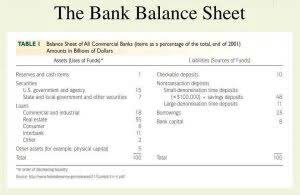
We can find the variation in the ICER by randomly sampling the source dataset. We find a large number of points that can be plotted in the two-dimensional space and evaluate the distribution of points over the region. In clinical trials, we can use bootstrap sampling to find these points. For medical decision models, probabilistic sensitivity analysis generates these points.
The Benefits of Excel Dashboards for Data Analysts

Incremental cost analysis will save you from engaging in unprofitable business ventures that can ultimately damage your financial state. Incremental costs are additional expenses a business spends to expand production. It is the total amount of money paid for producing an additional unit of a product. Suppose a company wants to reduce its carbon footprint by switching to renewable energy sources.
- Since incremental costs are the costs of manufacturing one more unit, the costs would not be incurred if production didn’t increase.
- It is crucial for businesses to be able to accurately calculate incremental cost in order to make informed decisions about pricing, production, and resource allocation.
- Several factors can influence incremental costs, and it is crucial to consider them when analyzing different options.
- This information is valuable for businesses to make informed decisions regarding production, pricing, and resource allocation.
- Therefore, knowing the incremental cost of additional units of production and comparing it with the selling price of these goods assists in meeting profit goals.
- Let’s say, as an example, that a company is considering increasing its production of goods but needs to understand the incremental costs involved.
Resources
Understanding incremental costs can help companies boost production efficiency and profitability. Incremental cost focuses on the money that companies have to invest in producing additional units. It can be related to the usage of resources, raw materials, labour costs, etc.
Evaluating Cost-Volume-Profit Relationships
- Depending on the type of business, you could purchase more inventory or fund a new expansion.
- Understanding marginal cost is crucial for businesses to maximize their profits and efficiently allocate their resources.
- On the other hand, incremental costs are future costs that are directly influenced by the decision at hand.
- When faced with complex business decisions, managers often find themselves at a crossroads.
- As a financial analyst, you determine that the marginal cost for each additional unit produced is $500 ($2,500,000 / 5,000).
Subtract the total cost of the first option from the second option to determine the incremental cost. Once you have calculated the incremental cost in Excel, it is important to interpret the results to make informed decisions. This involves analyzing the incremental cost data and understanding its impact on decision-making. Suppose a firm has the opportunity to secure a special order if it offers a discounted price per unit. If managers calculate the incremental cost per unit, they might find it is $25 compared to an average cost of $40.

Since we have all the necessary inputs to calculate the incremental margins, we’ll apply the formula Restaurant Cash Flow Management for each profit metric. Suppose we’re tasked with calculating the incremental margin for a company from 2020 to 2021. A profit margin measures the percentage of a company’s net revenue remaining once certain expenses have been deducted. Get ready to crunch some numbers and determine the baseline cost, or as I like to call it, the ‘pre-incremental’ cost.
Comparing Benefits and Costs
As a financial analyst, you determine that the marginal cost for each additional unit produced is $500 ($2,500,000 / 5,000). Calculating online bookkeeping the answer means taking into account a lot of material and other factors. Nevertheless, by understanding and properly applying marginal cost analysis, companies can make more informed decisions about their operations, ultimately leading to more profits.

Incremental Costs Vs Margin Costs

On the other hand, incremental costs are future costs that are directly influenced by the decision at hand. When analyzing different options, businesses should focus on incremental costs rather than sunk costs to make rational and forward-looking decisions. Incremental costing is a crucial concept when it comes to calculating and comparing the costs and benefits of different options. In this section, we will delve into the intricacies of incremental costs and explore various perspectives to gain a comprehensive understanding. By considering the incremental cost, businesses can make informed choices and maximize their financial outcomes. By comparing these incremental costs with the expected benefits (increased production, higher sales, etc.), the company can determine whether the expansion is financially viable.
- By approving the more effective interventions, QALY’s can be purchased more efficiently.
- By analyzing the net impact, they can make an informed decision on whether the expansion is financially viable.
- Economies of scale show that companies with efficient and high production capacity can lower their costs, but this is not always the case.
- The criteria for judging cost-effectiveness are different in different healthcare systems and in different countries.
- Whether you’re a manager, investor, or student, mastering this concept enhances your ability to navigate complex scenarios.
Press the “PT” button followed by the “I” button to calculate the incremental borrowing cost as a percentage. Enter your email and we’ll send you incremental cost this exclusive marginal cost formula calculator in Excel for yours to keep. Below, we break down the various components of the marginal cost formula. In economics, the so-called “marginal revolution” was, in fact, not marginal at all since it fundamentally changed how we think about economic value. Figures like Carl Menger and Alfred Marshall in the latter half of the 19th century shifted economics’ focus from the total utility of goods to the value of “one more unit” at the margin.

